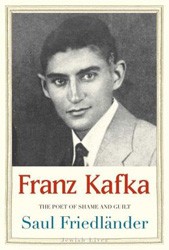Did you know Kafka was very afraid of mice? Did you know he hated the Paris Metro? Or that he once flirted with a girl, albeit from a rooftop? These and many more details are packed into Reiner Stach’s Is This Kafka? 99 Finds, published by New Directions and translated by Kurt Beals. Sectioned into 99 short thematic chapters, each built around a snatch of text from Kafka’s voluminous papers, this companion text to Stach’s monumental and acclaimed three-volume biography of Kafka is a serious collection of trivia.
Kafka exists today not just a writer; he has become a style, a sensibility, and an adjective. His manuscripts are themselves celebrities, desired and horded across the world. To be sure, 99 Finds humanizes Kafka away from the enigmatic magus of such touchstones as The Trial, The Penal Colony, and The Castle. Each chapter is a quick, sometimes furtive glance into a nook of Kafka’s life. We see his attempts to learn Hebrew (grammatically competent), the scraps of stories he abandoned, and the blueprint of the apartment in which he wrote The Metamorphosis. The commute between life and letters is especially evident in the tentative alchemy that transmuted Kafka’s friends and acquaintances into the mysteries of his fictions.
Self-doubt is on display everywhere behind the Kafka-curtain. In a particularly resonant chapter entitled “Kafka’s Desk,” the writer reflects, “Now I’ve taken a closer look at my desk and realized that nothing good can be produced on it.” Substitute “laptop” for “desk” and any contemporary writer might feel the same way. Stach alerts us that this is despair by design, a writing exercise Kafka deemed “wretched, wretched, and yet well intended” — as Walter Benjamin astutely observed, “There is nothing more memorable than the fervor with which Kafka emphasizes his failure.” Meager to nonexistent book sales, tenaciously crippling health problems, a kind and curious nature, significant sensitivities, and other critical details of the writer’s life conspire to give us a portrait of Kafka and his world.
This portrait is not solely textual: 99 Finds is attractively full of photographs, diagrams, illustrations, and facsimiles of manuscripts — an immersive visual milieu that comes alive off the pages of the book.
The devoted Kafkan will find much to edify and amuse oneself in these pages; those who have not spent significant time with Kafka’s fictions are encouraged to hold off on its biographical nuggets until they have reckoned with the major works. While there is much to learn about Kafka the man in these pages, the true weight of Kafka’s achievement can never be weighed or measured on the scales of anecdote and biography. The response to the question found in the book’s title is unquestionably yes, but it is not the Kafka that will matter always and forever: that Kafka is hidden in plain sight, sitting in the back row in Report to An Academy, or passing among the crowds coming to see The Hunger Artist. To paraphrase the great Sage Ben Bag-Bag: “Turn him and turn him, because everything is in him,” from the truly dismissable to the far-from-trivial-truths.
Related Content:





